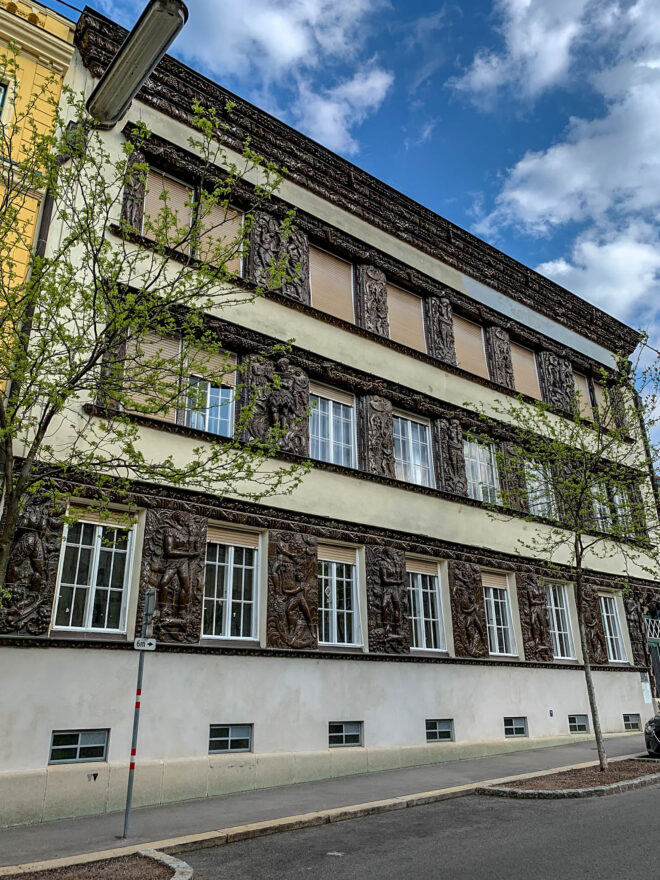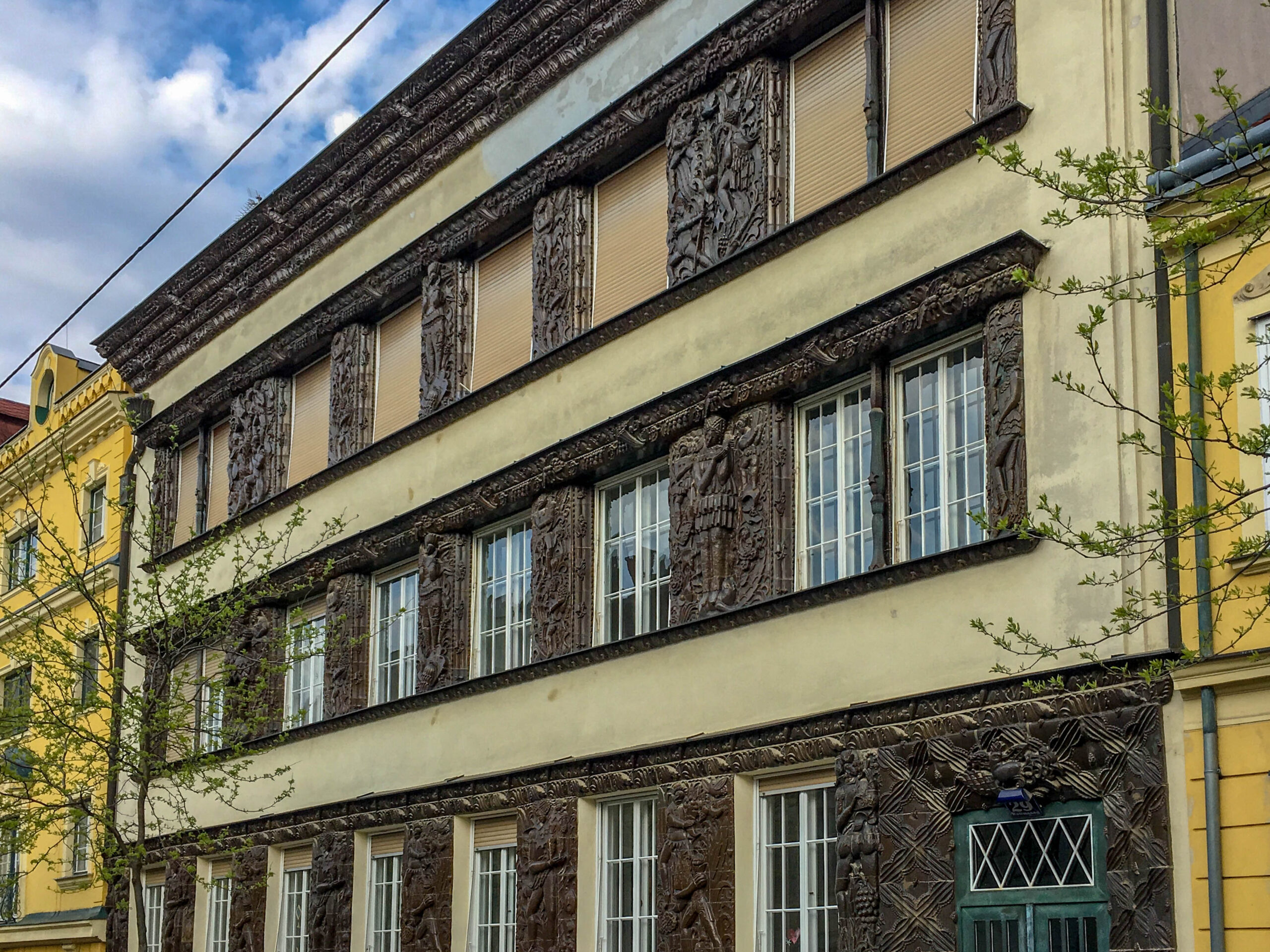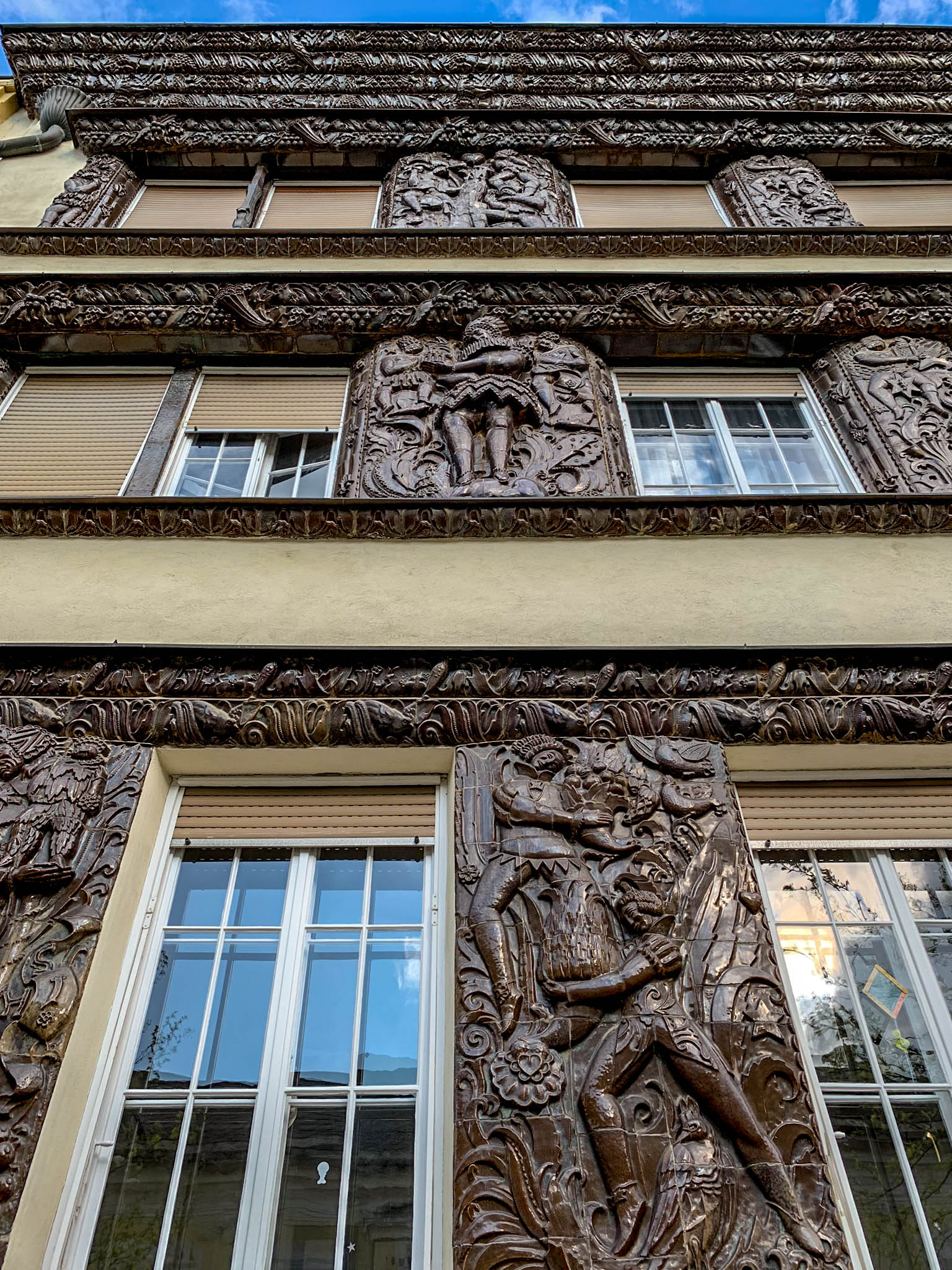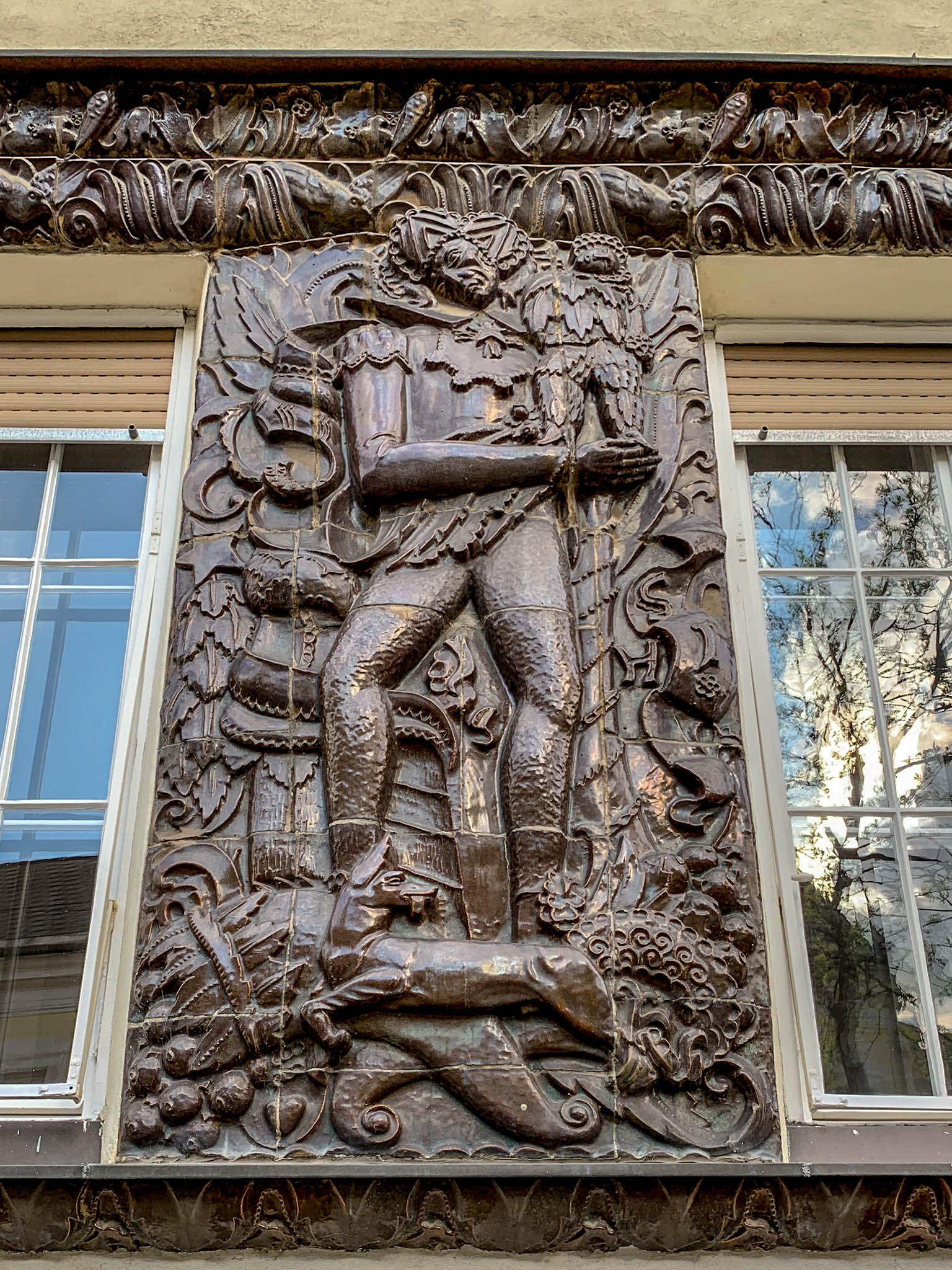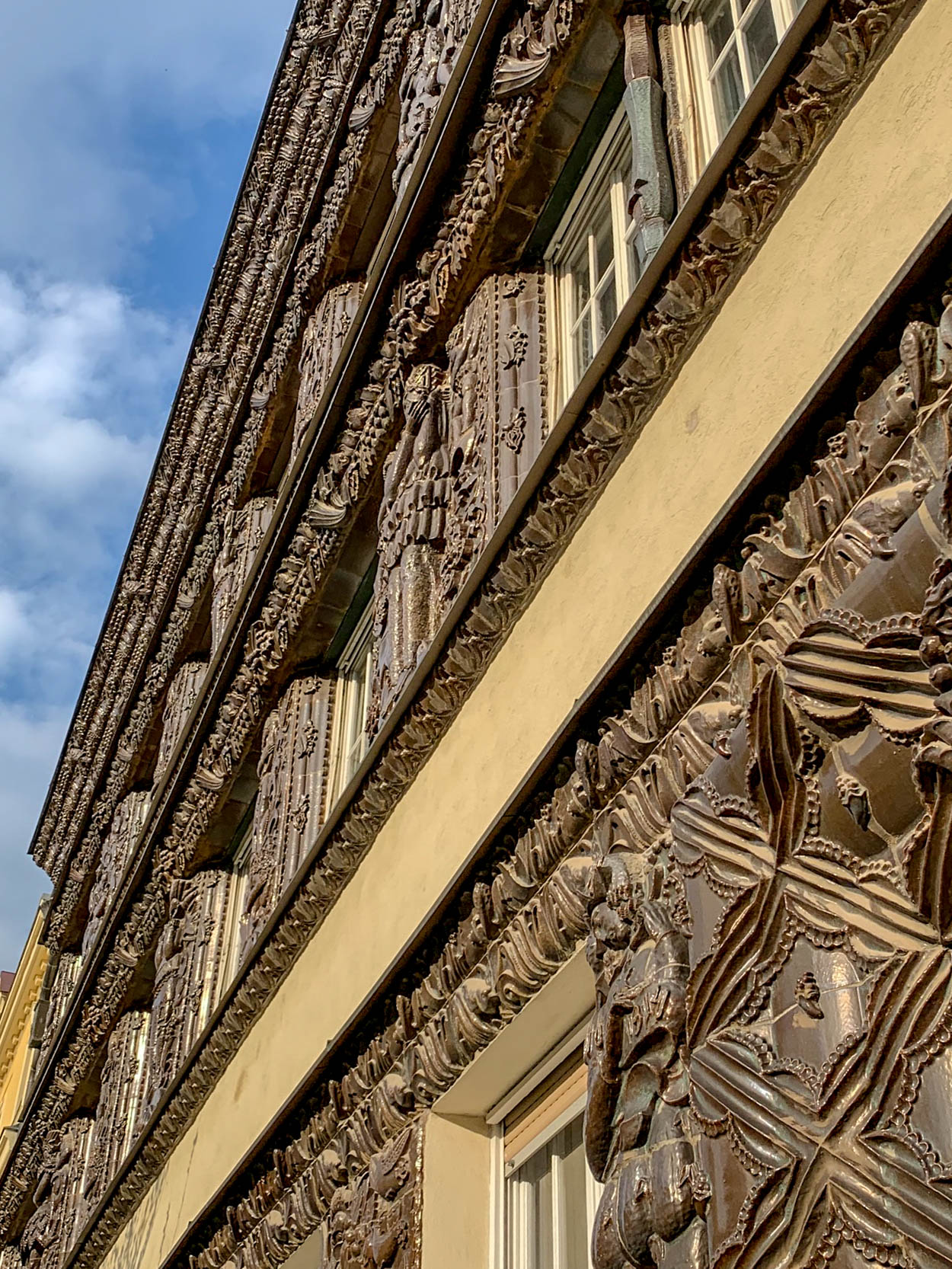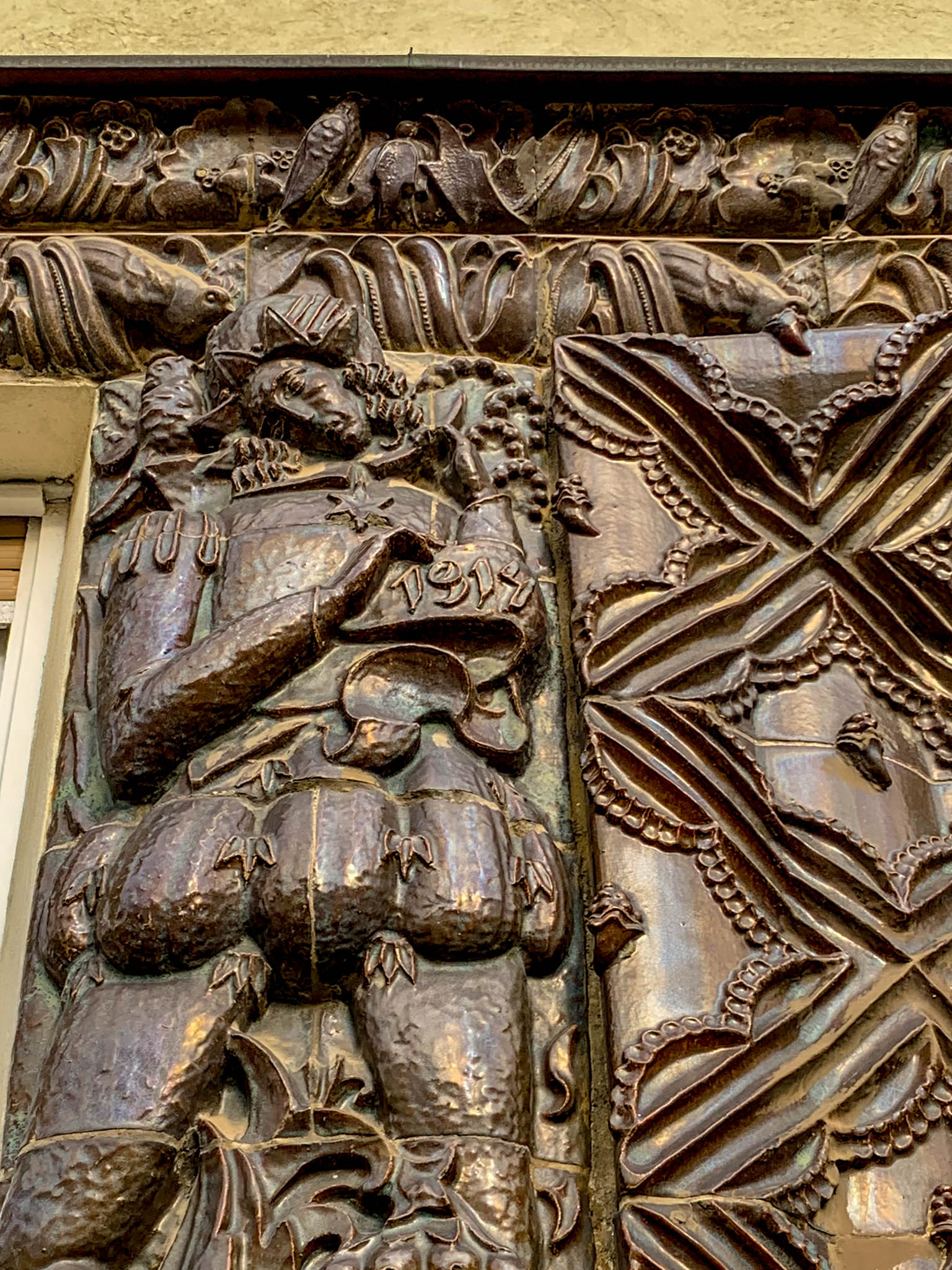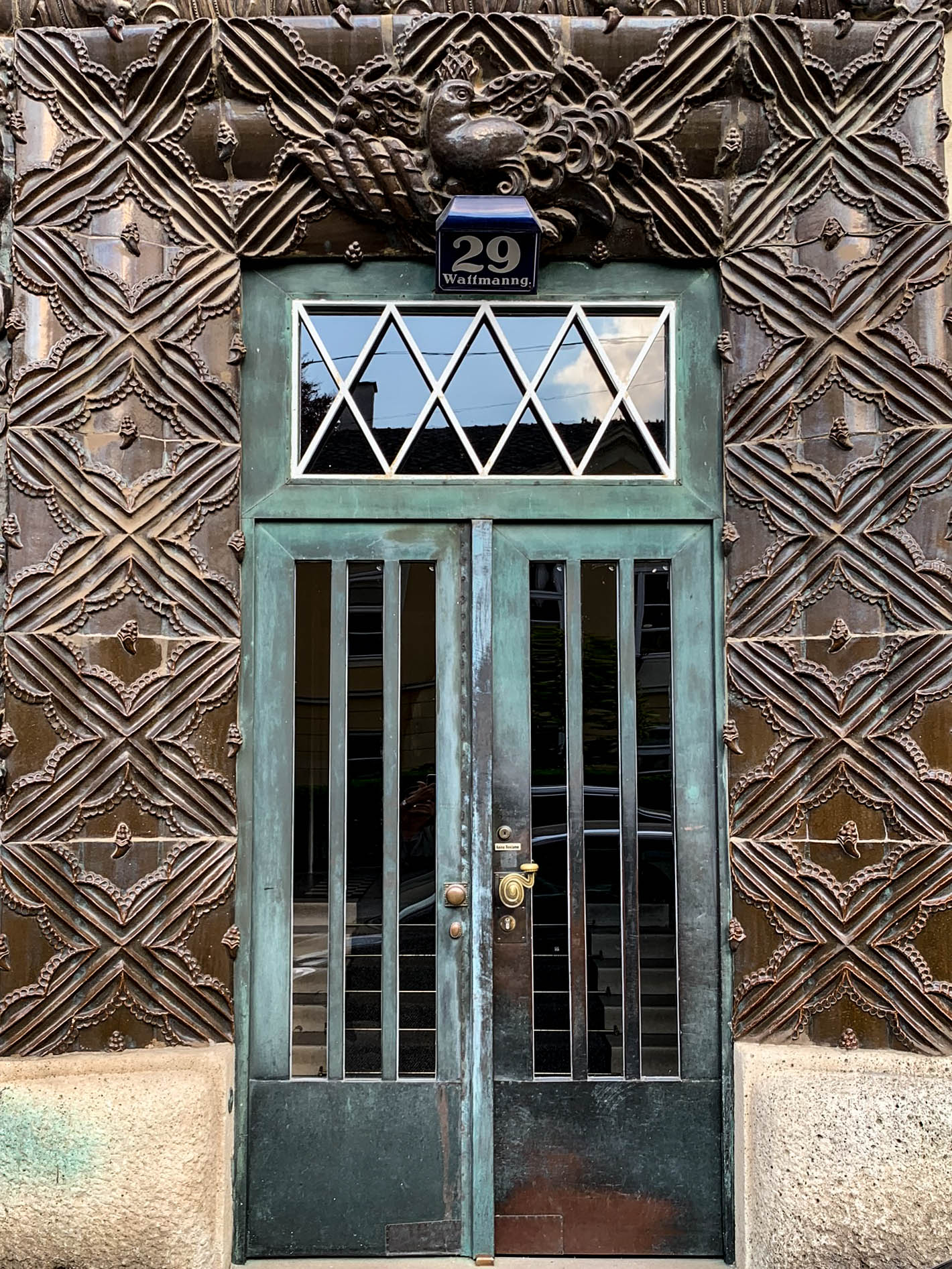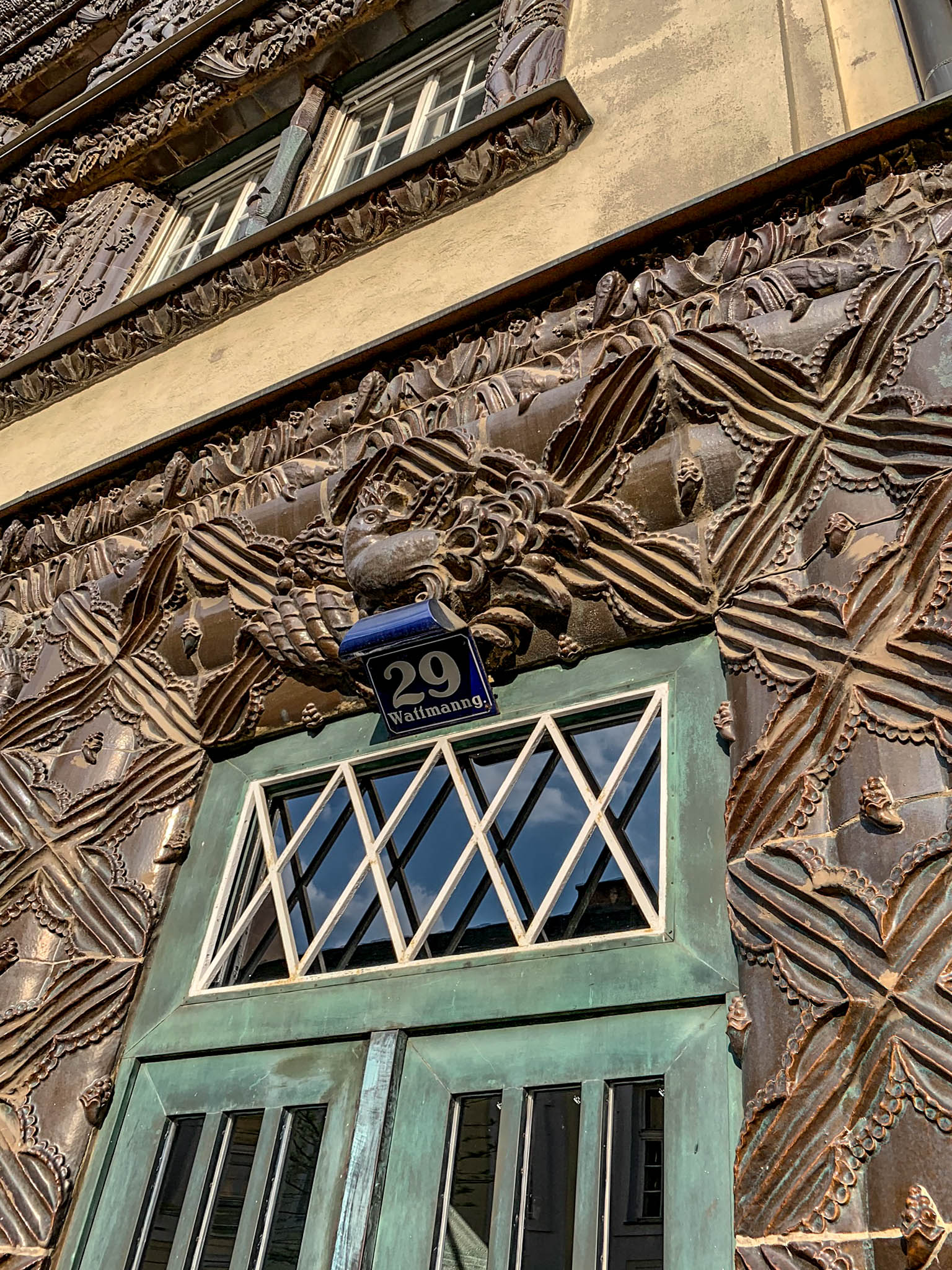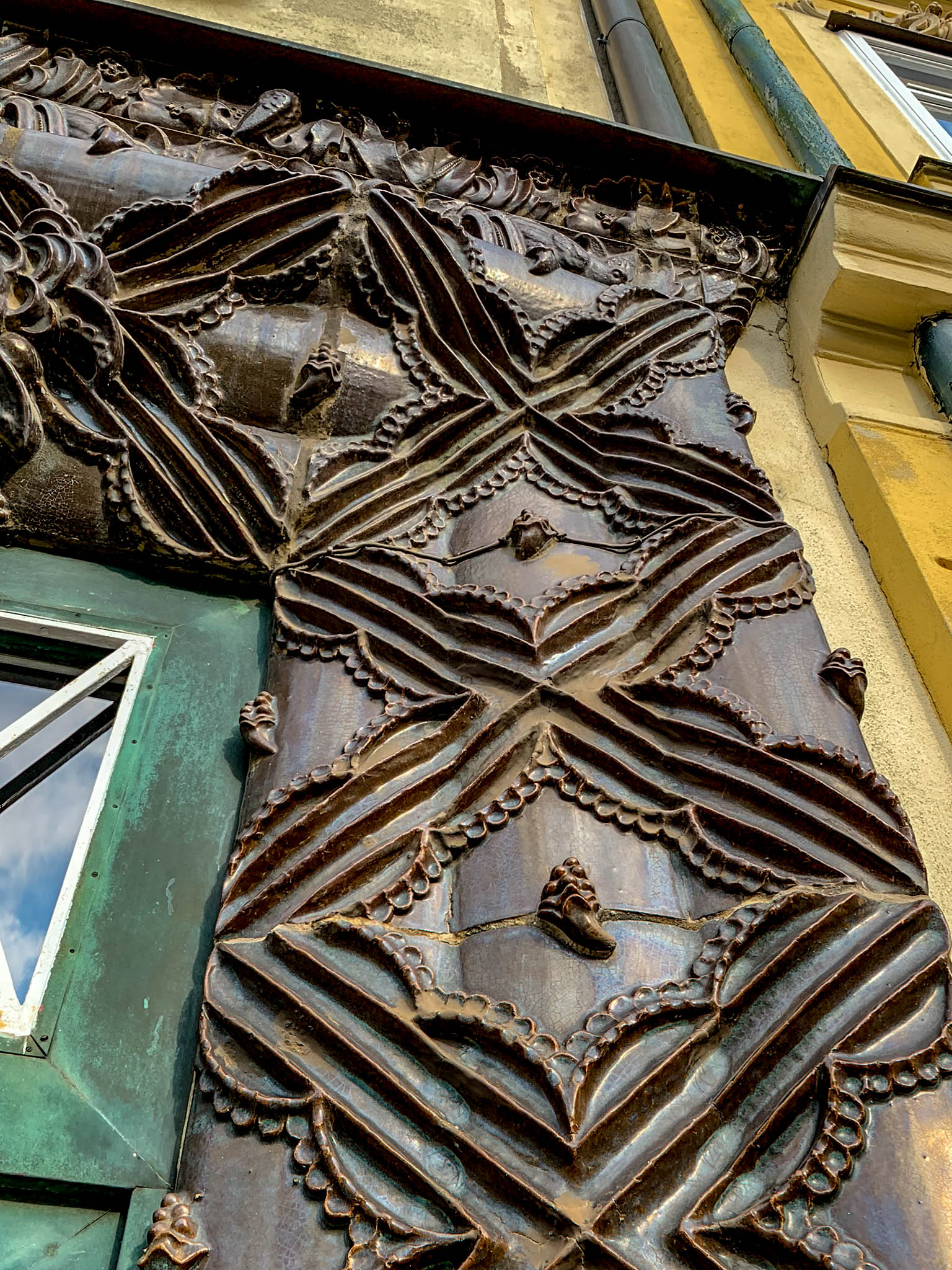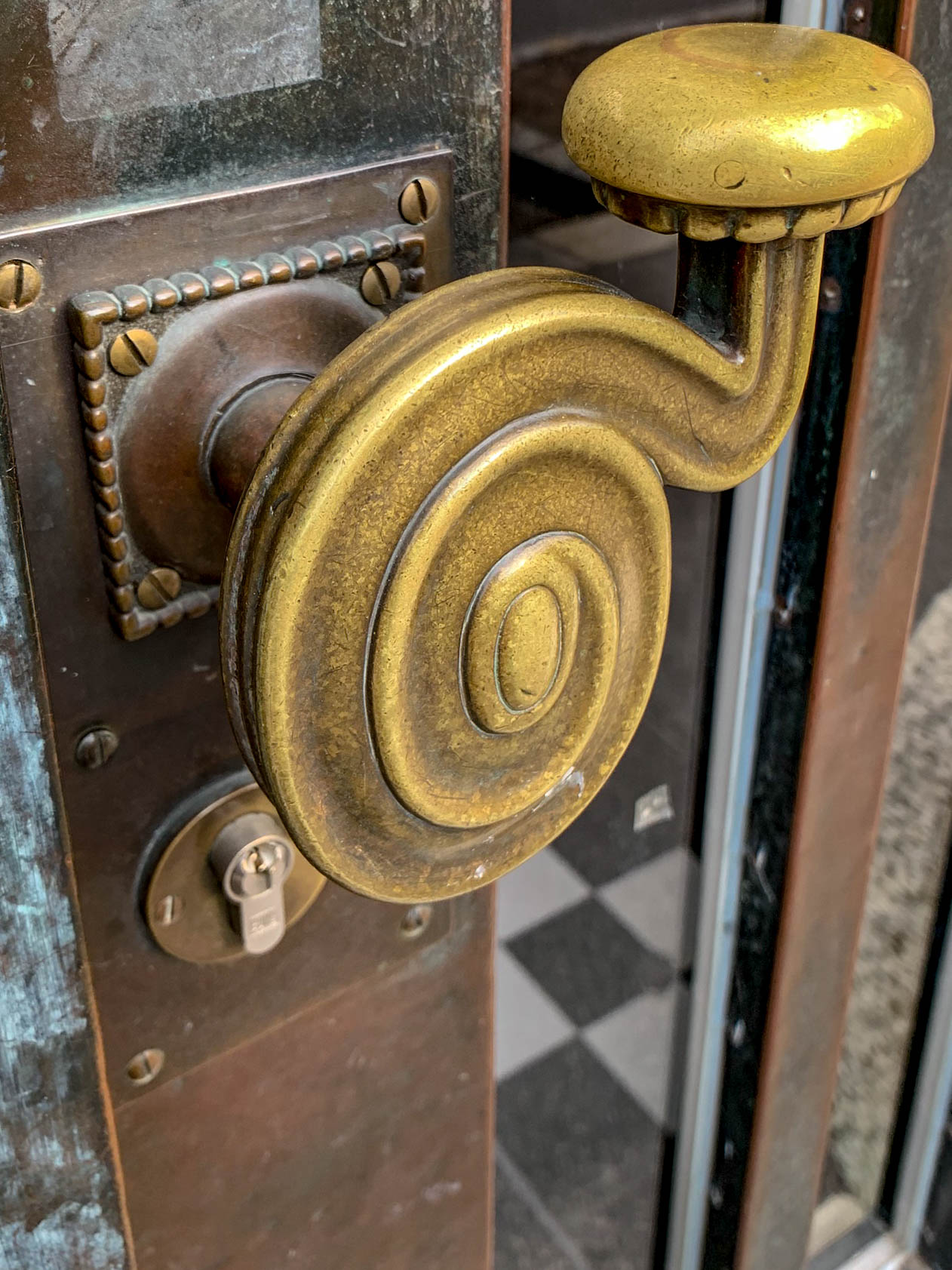1914
Architect: Ernst Lichtblau
Wattmanngasse 29, Vienna, Austria
The three-story listed residential house, the so-called Chocolate House, was built in 1914 according to plans by Ernst Lichtblau for the client Ida Hofmann in Vienna-Hietzing, Austria.
Schokoladenhaus
Because of its unusual facade design, the house was popularly called Schokoladenhaus (or Chocolate House).
Ida Hoffmann was married to the owner of a factory for meerschaum pipes.
Vienna was a metropolis of meerschaum pipe production since the beginning of the 19th century. Well-known manufacturers were Andreas Bauer, Leopold Weiss and Robert Strambach.
Ernst Lichtblau
The architect Ernst Lichtblau was one of the few students of Otto Wagner who approached tendencies of the architecture of interwar modernism.
In the use of motifs from folk art, in forms that already refer to the coming Art Deco, and in the shaping of horizontal window bands, Lichtblau anticipated elements of the architecture of the 1920s.
The majolica reliefs are designs by the sculptor and ceramist Willibald (Willy) Russ.
They are decorated with fairy-tale animal and plant figures as well as imaginative ornaments.
Wiener Werkstätte
The motifs seem to be taken directly from folk art, which provided constant inspiration for the Wiener Werkstätte.
They can also be interpreted as oversized carvings on meerschaum pipes as a reference to the builder’s occupation.
The highly rectangular ceramic fields between the windows and around the entrance portal consist of floral and figural representations that vary throughout the three floors.
In the mezzanine, the letters H, I and S were incorporated in three reliefs.
In the figure relief on the left side of the entrance portal can the year 1914 can be found.
The cornice is multi-tiered and decorated with relief moldings depicting plants and birds.
Majolica
Dark brown majolica cornices connect the rows of windows on the floors. The smooth surfaces of the facade were originally made of polished Carrara marble.
Wall pieces between the windows, which look like pillars, reinforce the impression of a window band motif.
The ceramic cladding of the buildings of Otto Wagner’s students and associates is mostly inspired by the Majolikahaus on Linke Wienzeile.
The decoration on the façade of the Chocolate House is reminiscent of the majolica reliefs created by Richard Luksch in 1908 for the façade of the Handelsakademie der Wiener Kaufmannschaft on Hamerlingplatz in Vienna.
Conversions
1914, the Lichtblau House in Wattmanngasse received the “Prize of the Municipality of Vienna for Outstanding Buildings.”
In 1932 an apartment division took place.
1938 the roof of the house was extended. An apartment was built where the drying room and ironing room had originally been. The former laundry room was converted into a studio.
The extravagant facade found no immediate successors in Vienna, but ceramic facade decoration is often present on later buildings of interwar modernism.

